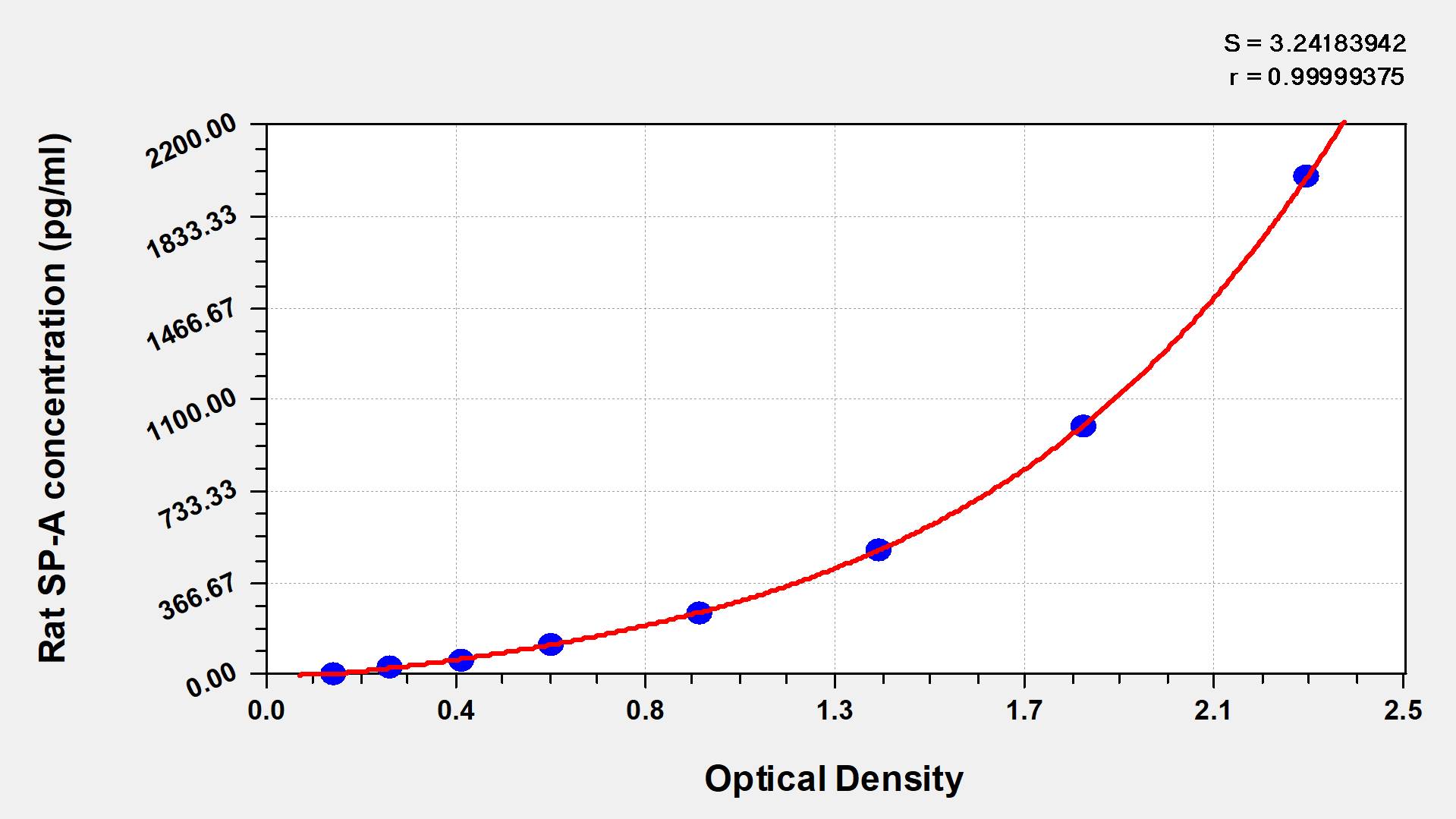The Rat Pulmonary surfactant-associated protein A (SP-A) ELISA Kit is designed for precise and accurate measurement of SP-A protein levels in various sample types. The kit is developed to detect the Sftpa1 gene product, a vital component of the pulmonary surfactant complex, which is involved in respiratory function and immune regulation.
The kit is suitable for the analysis of serum, plasma, and tissue homogenates, making it a versatile tool for research in signal transduction. The detection range of the kit is 31.25 pg/ml - 2000 pg/ml with a sensitivity of 7.8 pg/ml, allowing for precise quantification of SP-A protein levels in a wide range of concentrations.
The assay time for this kit is 1-5 hours, and the sample volume required is 50-100ul. The detection wavelength is 450 nm, ensuring high sensitivity and specificity in sample analysis. Its superior quality, reproducibility, and specificity make it an excellent tool for researchers in signal transduction.






